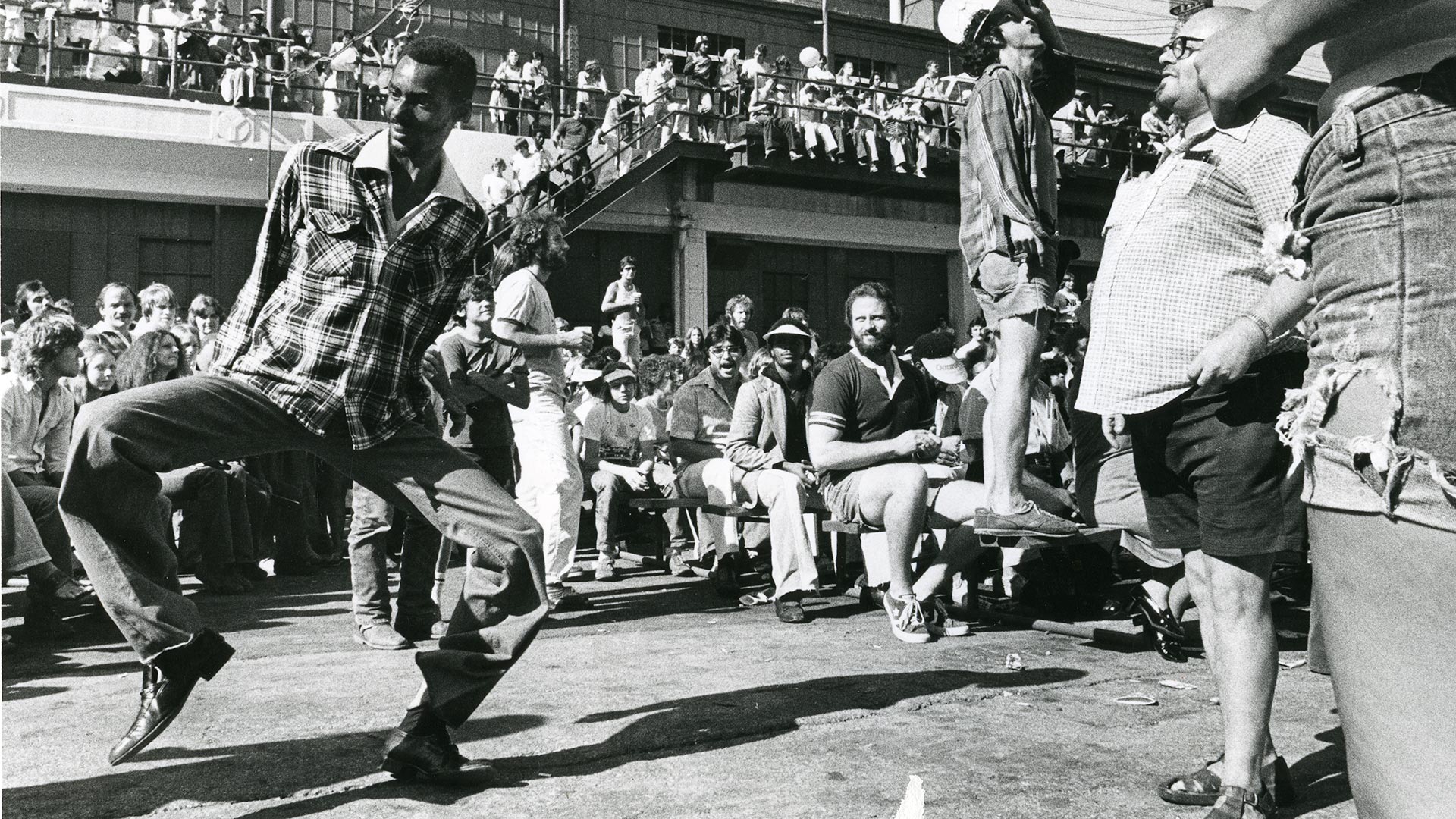
Characteristics
Blues Dance Characteristics
See the characteristics that make blues dancing unique in these videos of blues dancing demonstrations, competitions, and social dances.
Videos of Different Characteristics
-
Groundedness
Downward, balanced, and solid movements are emphasized. Dancers use the floor to drive off of, as well as sink and compress into. Feet stay in contact with the floor much of the time.
-
Pulse
Dancers reflect the main beat of the music with a constant pulsing motion, often in repeated downward movements from the knees and hips or pendular motion of the hips.
-
Lag
Dancers respond to rather than anticipate the music. For example, the dancer may press off the floor with the beat of the music, allowing the foot to land just after the beat. The follower’s step can be a reaction to the lead’s movement and may even land after them. Drawn-out notes in the music can inspire the dancer to allow parts of the body to lag behind other parts.
-
Shape
Dancers create asymmetrical yet balanced shapes with their bodies, juxtaposing contrasting movements or shapes and emphasizing angles in the knees, hips, arms, feet, and torso.
-
Rhythm Play
Dancers express the complexity and layers of rhythmic patterns in the music through their steps and body movements, sometimes expressing multiple rhythms at the same time. Playing off each other, they creatively match, contrast with, and react to their partners’ movements.
-
Polycentric Movements
Movements emanate from different parts of the body simultaneously. For example, a dancer may create a pattern with the feet while rolling the chest.
-
Improvisation
Dancers use, combine, and create steps and movements to express the music, rather than relying on a codified pattern of steps repeated throughout the dance.
-
Individuality
Dancers express their personal and individual style within the framework of the dance. This may come in the form of intentionally breaking a pattern or rhythm or adding a twist to a move.
-
Apart Play
Dancers respond and elaborate upon their partners’ steps and moves, rather than copying identically.
-
Call and Response
Dancers react to the call and response format in the music. They may create a call and response series of movements within their own body or alternate movements with their partners.
-
Coolness
Dancers appear to move energetically yet effortlessly, expressing a relaxed and laid back yet strong and confident attitude.
-
Ephebism
Youthful energy and vigor regardless of actual age of the dancer.
Practice Along
Practice some of these characteristics with Jennifer White, registrar. Here is a playlist of Youtube videos demonstrating some of these characteristics.
Watch this playlist of Blues Characteristics
African American Man Dancing in a Crowd, Chicago Blues Festival, Chicago, Illinois, 1978. By D. Shigley. Blues Archive, University of Mississippi.